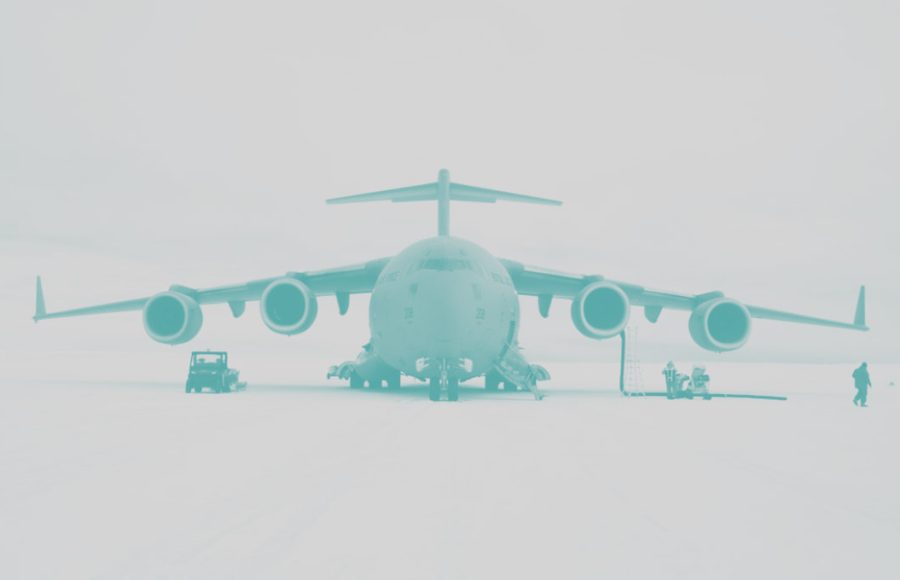Utilising Australia’s Strategic Assets in the Indian Ocean Region
Key customers:
Indian, South East Asian, Maritime, Economic and Trade analysts, foreign policy Professionals in Indonesia, South East Asia and Trade.
Abstract
Australia’s Indian Ocean Region strategic interests are becoming increasingly threatened by Indo-Sino competition, resulting in rising regional military activity and instability that is exacerbated by increasing US isolationism. Australia should safeguard its interests by operationalising its regional assets into defence capabilities on the strategically located Cocos (Keeling) Islands and Christmas Island territories to enhance the US’s relatively dwindling power in the Indian Ocean Region.
Australia’s Strategic Interest in the Indian Ocean
A Secure Northwest Approach
Australia’s first strategic interest in the Indian Ocean region (IOR) is to ensure a secure northwest approach, which can offer greater protection to mainland Australia. The approach is home to two of Australia’s Indian Ocean Territories: Christmas Island (CI) and the Keeling Islands. The islands’ locations are a significant asset in securing the Indian Ocean approach to Australia because they provide broad situational awareness due to their proximity to both Indonesia and the Australian mainland. However, the islands could become a vulnerability if a hostile power were to gain access to one or both strategic locations because they could be used as stepping stones to attack the Australian mainland and disrupt military operations and trade. The prospect of a hostile power threatening the Indian Ocean Territories is remote in our modern era, however, it has occurred previously.
A Chinese naval task force entering the Indian Ocean and conducting exercises near or in CI’s exclusive economic zone on three occasions since 2014 recently exposed Australia’s potential vulnerability through its northwest approach. The most notable case is the ‘Christmas Cruise’ incident of 2014. This 23-day deployment of a China’s People’s Liberation Army Navy surface action group operating off CI caught the Australian Defence Force completely by surprise. China’s actions were not illegal or hostile, but the military actions near Australia’s northwest approach without Australia’s knowledge revealed the evolving regional environment and the approach’s potential vulnerability in two ways: Chinese military’s ability to extend into the eastern Indian Ocean; that Indonesia no longer served as a buffer between Australia and aggressive powers. These vulnerabilities signify a robust strategic interest to develop the approach’s defence capabilities proactively.
Secure Maritime Trade
Australia’s second strategic IOR interest is secure maritime trade because trade in the Indian Ocean is critical to Australia’s economy. Australia’s Indian Ocean coastline hosts over 50 per cent of the country’s sea freight exports. These exports include 99.6 per cent of iron ore shipments – Australia’s top export. Exports to China, Japan, North Asia and Southeast Asia from this coastline pass near CI, further demonstrating the island’s significance. The interconnectedness of regional trade means that any disruption to the transit of goods would have significant consequences for Australia.
Stable Regional Order
A stable regional order is foundational to the security and protection of Australia’s strategic and economic interests, as stability reduces the likelihood of conflict. The threat to the country’s northwest approach is thus also reduced, while vital maritime trade in the Indian Ocean Region is more secure.
Threats to Australia’s IOR Interests
Growing Indo-Sino competition in the IOR threatens all three of Australia’s regional strategic interests, despite the current low probability of conflict. This competition arises from China and India’s necessity to protect vital sea lines of communication, specifically for energy resources. China is extending its naval presence across the IOR, which began with antipiracy operations in the Gulf of Aden in 2008 and has progressed to the announcement in 2015 of the country’s first overseas military base in Djibouti. In 2016, a Chinese nuclear-powered attack submarine conducted the country’s first port call in Karachi, Pakistan. The port call demonstrated China’s emerging capability to project power into the Indian Ocean and to protect its sea lines of communication. China’s expanding military activities and ‘String of Pearls’ has sparked unease in India, as Indian public debate portrays China’s actions as maritime encirclement and an effort to displace India’s strategic balance in the region. India has responded by developing its naval capability to project power across the vast majority of the Indian Ocean through significant increases in defence expenditure, which rose by 5.5 per cent since 2017. China and India’s increasing military activity, coupled with their vital economic interests, in the IOR is creating an environment of uncertainty, strategic instability and a staging ground for conflict, running in direct contravention to Australian strategic goals in the IOR.
Australia’s Current Reliance Policy
Australia has relied on the US as a ‘great and powerful friend’ to provide it with security in the Indian Ocean since the 1970s. The US’s predominance in the IOR will continue for some decades due to three main obstacles facing China: insufficient power projection capabilities, absence of logistics support facilities and inadequate intelligence infrastructure. Furthermore, China has been reluctant to become a major military power in the IOR because of US predominance and Beijing’s ongoing preoccupation in the South China Sea. However, a possible reduction of US defence forces in the IOR could make China rethink its regional military role and provide an opportunity for China to further expand its military presence. Although there have been no indications an American naval scale-down in the IOR, South East Asian perceptions of reduced US reliability due to President Trump’s isolationist rhetoric could greatly undermine US influence in the region. If China and India’s power rises while the US’s continues to decline, then a major military power transition with the possibility of armed conflict is underway. These possibilities create an unstable and unpredictable security environment for Australia in the IOR, meaning that the country should consider how it can protect its regional strategic interests and adopt a proactive approach to secure them.
Policy Recommendations and Potential Costs
Reinforcing the US’s Regional Power
One method Australia can use to protect its strategic interests in the IOR is by operationalising its assets into defence capabilities, beginning with reinforcing and prolonging American regional dominance. The American-led regional order underpins stability. Australia can reinforce US military power by improving its defence capabilities in the eastern IO, specifically on the Keeling Islands and CI. The islands have recently re-entered the spotlight in Australian policy debate because of the IOR’s changing security environment and the islands’ geographical location creating the potential for considerable strategic reach into the eastern Indian Ocean and Southeast Asia. The islands also act as staging locations for aircraft maritime patrol and surveillance operations that could be expanded if Australia further developed their defence infrastructure. Proactively reinforcing US power through these islands would not only contribute to ensuring the stability of the regional order, but also hedge against the likely continued decline of US power by fortifying Australia’s northwest approach and providing the country with an expanded ability to monitor trade.
Upgrade Keeling Islands’ Runway
Australia’s 2016 Defence White Paper proposed an upgrade to the runway on Keeling Islands ‘to support introduction of the new P-8A Poseidon maritime surveillance and response aircraft,’ but the upgrade would cost a significant amount. Increased and sustained personnel stationed here would be necessary, with higher costs for staffing and operating the upgraded facility than mainland bases. The central lagoon would require dredging to accommodate large logistics vessels carrying munitions, fuel, spare parts and other supplies, while the fuel requirements of P-8A operations would necessitate major facility upgrades for storage. Australia should accept these costs because the upgrades would expand the aircraft’s operational flexibility, allowing for extended surveillance operations that would support all three of the country’s strategic interests in the IOR. Expanded surveillance operations would assist in more efficient monitoring of Australia’s northwest approach, which would improve security and certainty. These operations could also track maritime trade and undertake anti-submarine warfare patrols for longer periods of time near sea lines of communication.
The upgrades would also act as a proactive contingency plan for a potential conflict in the IOR since the ability to conduct surveillance, patrols, escorts and interdiction operations near sea lines of communication and Australia’s northwest approach would be a high priority. An upgraded facility would support the US-led regional order and stability by improving maritime domain awareness where the US has finite resources. The US could use the upgraded facility, pending appropriate terms, fostering closer relations and enhancing Australia’s value as a security partner.
Extend Surveillance on CI
An upgraded air base on CI would be desirable for extended surveillance given its closer proximity than Keeling Islands to sea lines of communication and Australia’s northwest approach. However, the volcanic terrain on CI would make this extremely expensive, albeit feasible, as Australia would need to move the airfield to a new location. Australia should instead invest in passive sonars off CI’s coast to provide further surveillance, specifically on submarine movement in the nearby Java Trench Detecting and tracking submarine movement in the north-eastern Indian Ocean and the Indonesian archipelago would prove invaluable in a potential conflict to ensure the security of Australia’s northwest approach and trade by providing intelligence on an adversary’s movement.
Further surveillance support on maritime trade would also be possible given the island’s proximity to the Sunda and Lombok Straits. The sharing of such intelligence would support the maintenance of the USled regional order and is increasing in value given rising Chinese submarine activity into the IO. The feasibility of such a venture is unknown because results from sonar experiments conducted from 1971 to 1978 have not been made public, and the seabed terrain could be unsuitable for sonar systems.
Viability in Implementation
Plans for upgrading the IOTs requires discourse on if the territories could be defended during a conflict because the upgrades could be used against Australia by an occupying force. CI’s need for improved defensive capabilities cannot be understated given its proximity to Indonesia. However, Australia should prioritise defence infrastructure on Keeling Islands and harden the base with concrete shelters for increased viability during a conflict. The reasoning for this is twofold. First, the likelihood of CI not possessing an upgraded air base given the substantial costs and Australia’s inability to use the island as a naval replenishment facility lowers the relative strategic value of CI. The facility would also require significant development because it currently has no secure anchorage and is exposed to north-westerly winds, rendering the facility unusable for several weeks from November to April. Second, the increased relative strategic value of the Keeling Islands and the higher probability that it would act as Australia’s forward operating base during a conflict due to the proposed upgrades would likely put it at a higher risk for targeting by an adversary’s landattack cruise missiles, surface combatants, submarines and special forces

